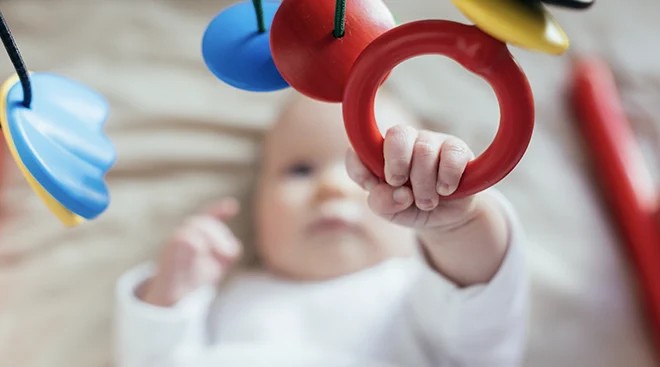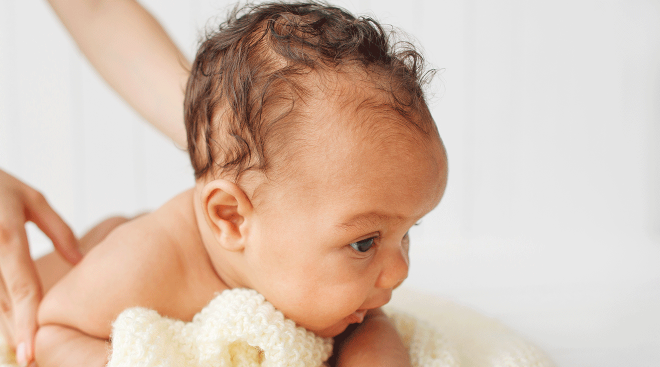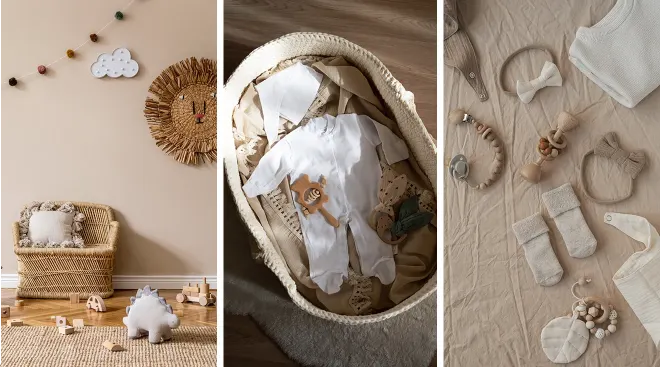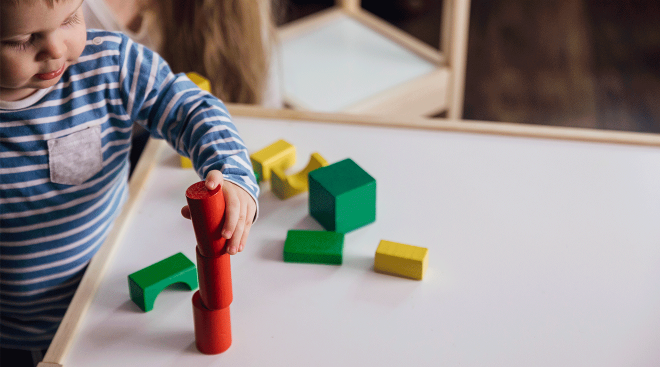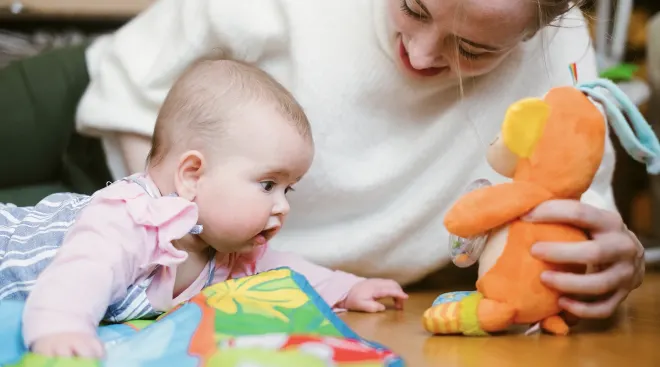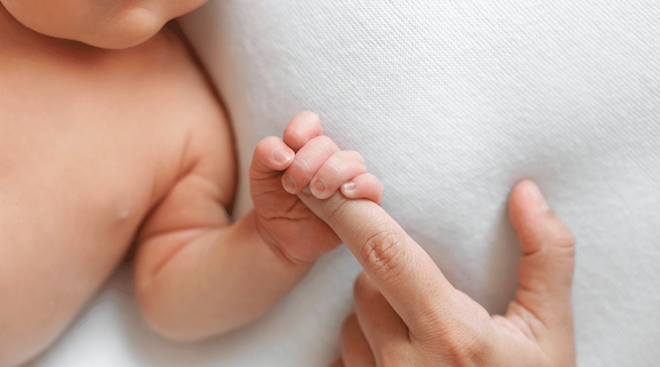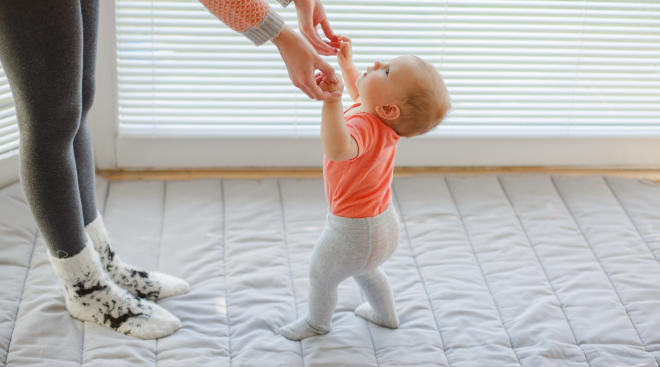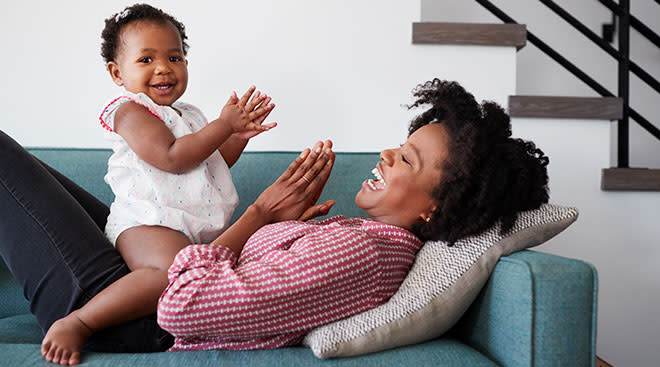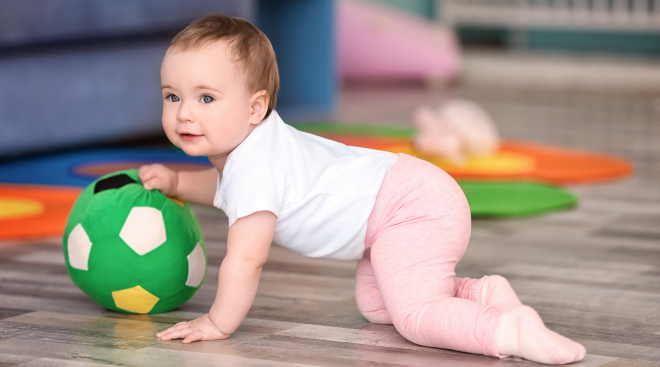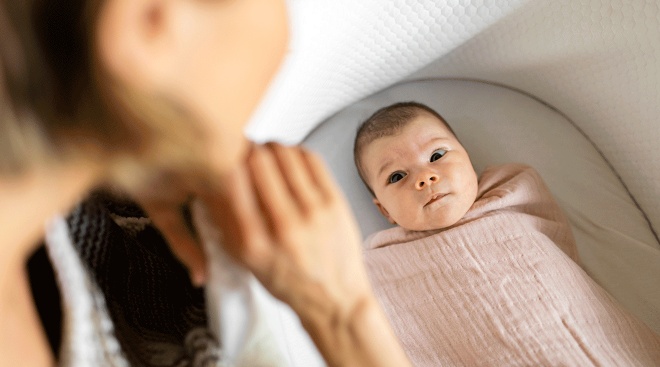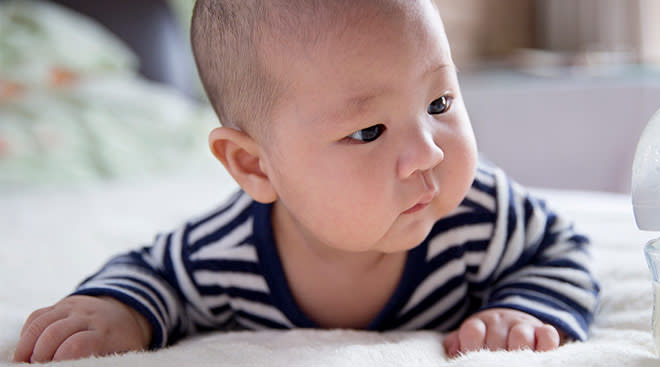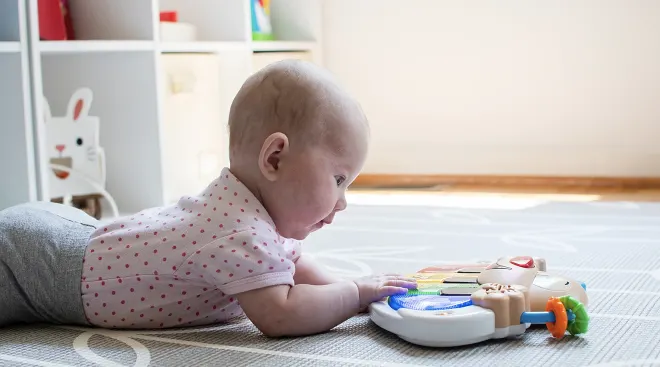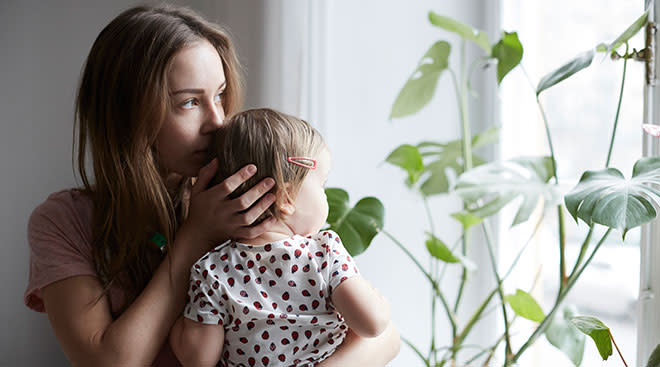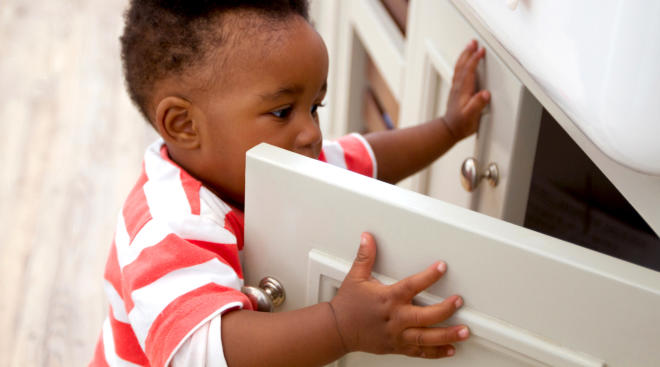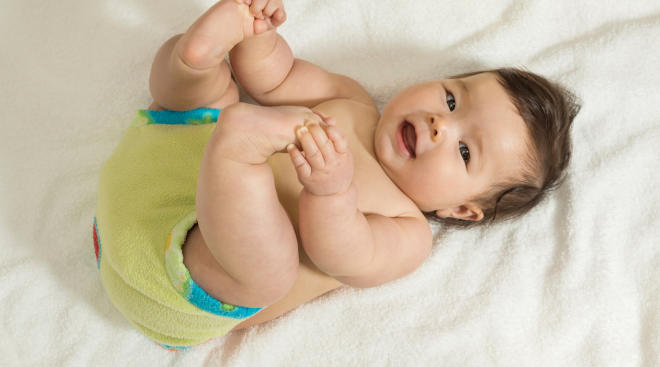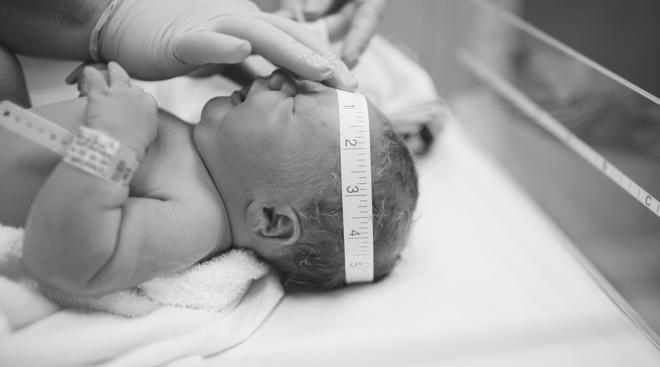When Do Babies Start Grabbing Things?
Is there anything cuter than an itty-bitty baby hand reaching for an itty-bitty baby toy? If you’re eager for your infant to start holding their rattle, grabbing their feet and batting at objects, you may have to wait a little longer. Although babies are born with a reflexive grasp (you know, the very thing that explains why their tiny fingers perpetually pull at your hair!), they won’t purposely reach out and take hold of something until they’re a few months old. So when do babies start grabbing things with intention? When do they reach for toys and bat at objects? Read on to get a sense of how this milestone will unfold, the general timeline and what you can do to help foster baby’s development.
At around 5 to 6 months old, baby will start reaching with intention and begin grabbing and grasping items. But there’s a typical progression of ability you can expect as your little one works up to this skill. Of course, there’s a fair amount of natural variation between individual babies’ growth and development, says Caroline Martinez, MD, assistant professor of pediatrics and medical director of developmental pediatrics at Mount Sinai Medical Center. That said, most infants will follow this standard progression:
- Reaching. When do babies start reaching for things? First they’ll begin to notice objects, usually around 3 months of age. Their next move is to actually reach for them.
- Batting. When do babies bat at objects? At 3 or 4 months old, baby may begin to bat at or hit nearby objects, though their movements aren’t exactly refined, says Michelle Macias, MD, a developmental pediatrician at Medical University of South Carolina in Charleston, South Carolina.
- Bringing hands to the midline. Before true grabbing occurs, babies will begin to bring their hands to the center of their bodies and, yes, their hands (and sometimes feet) will go straight to their mouths.
- Opening palms. Gradually, around 4 or 5 months of age, you may find baby’s hands opening more often—and this is when things get really fun! An open palm paves the way for the ability to grab objects.
- Grabbing. So exactly when do babies start grabbing? At around 5 to 6 months old, baby may be able to grab and grasp. Success!
- Transferring objects. By 6 months, most babies transfer objects from one hand to the other. Almost all will be showing off this trick by 9 months old.
- Shaking and banging. Between 6 to 8 months, baby may begin to shake rattles to produce sound—or you might find them banging their hands or other objects on the ground.
Somewhere along their journey of batting, grabbing and holding, a lightbulb may go off in baby’s head as they discover that certain movements have an effect (like a rattle making noise). Cognitive and fine motor skills develop simultaneously.
You don’t have to wait until baby is older to promote progress with play. To begin, grab a high-contrast toy. “When babies are little, their vision isn’t as good, so black and white, brightly colored or fluorescent and black objects can help get their attention,” explains Macias.
Slowly, move the toy back and forth and up and down in front of baby within their arm’s reach. “It’s easier to do this when they’re on their back, which frees up their hands to move,” Macias says. A stroller or car seat that props baby up can be another good setting for this exercise.
If high-contrast toys aren’t doing the trick, level up: Anything that has lights or makes noise will engage baby’s senses. And it’s all the better if your toy of choice is sized for baby’s small hand. “It’s easier for little hands to hold and transfer a ring or round rattle than an object like a hard block,” says Macias.
Besides exposing baby to a variety of objects to reach for, you can place toys right into their little hands to explore, Martinez says. In due time, they should be reaching consistently, at which point you can begin to place objects of interest just out of grabbable distance. This challenges them to recruit more muscles to get what they want and paves the way for gross motor skill development.
Conveniently, developmental milestones more or less coincide with child wellness visits, which means your pediatrician will likely ask about baby’s progress. That said, if baby isn’t able to grab or grasp an item by the six-month mark, you’ll want to check in with their pediatrician. “Delays in development are common,” says Martinez. “It’s important to identify them as early as possible so we can intervene and provide treatment.” Keep in mind, though, that milestone benchmarks are used for surveillance, not diagnosis. Some babies just need more time.
If there is a recognized developmental delay, baby will undergo a comprehensive evaluation and receive an individualized early-intervention treatment plan. The good news is that the outlook with early intervention is typically very bright: “When we see developmental delays, our assumption is that the child is going to catch up,” says Macias. “There’s a lot of elasticity in the brain, so intervening early is important.” That said, if your child regresses in terms of development, you’ll want to let your doctor know. Macias says that anytime a child loses a milestone (they do something, and then they can’t do it again), it’s cause for a pediatrician visit.
Baby is a curious creature. They’re learning and growing and developing every day. The ability to reach for, grab and hold objects is a huge step in baby’s quest to be autonomous. If they’re not there yet, keep working on it. Your independence-seeking cutie will be grabbing all sorts of things in no time. Time to baby proof!
Please note: The Bump and the materials and information it contains are not intended to, and do not constitute, medical or other health advice or diagnosis and should not be used as such. You should always consult with a qualified physician or health professional about your specific circumstances.
Plus, more from The Bump:
Michelle Macias, MD, is a developmental pediatrician and professor of pediatrics at Medical University of South Carolina in Charleston, South Carolina. She received her medical degree from the Joe R. and Teresa Lozano Long School of Medicine at the University of Texas.
Caroline Martinez, MD, is an assistant professor of pediatrics and the medical director of developmental pediatrics at Mount Sinai Medical Center. She received her medical degree from SUNY Downstate Medical Center College of Medicine.
Learn how we ensure the accuracy of our content through our editorial and medical review process.
Navigate forward to interact with the calendar and select a date. Press the question mark key to get the keyboard shortcuts for changing dates.

































